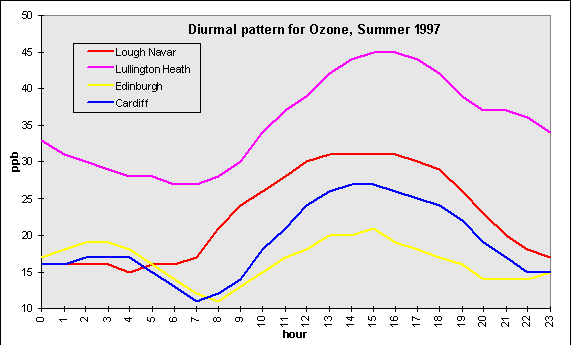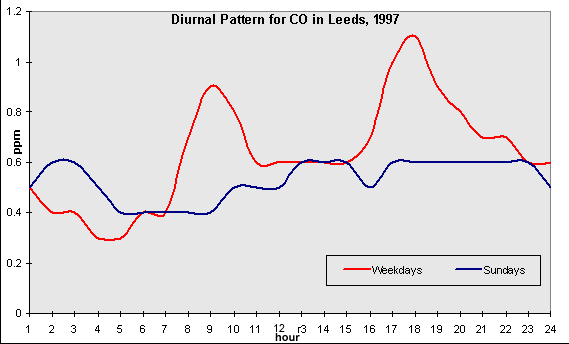
The figures below show diurnal patterns of variation for two pollutants - carbon monoxide and ozone. These are not changes of concentration over a single day, but time-averaged patterns for a typical 24-hour period.
Figure 7a. Diurnal variation of ozone

Nearly all the carbon monoxide in the air comes from motor vehicles, so its concentrations closely follow the pattern of traffic. These are therefore highest during the morning and evening rush hours. When traffic is lighter, levels decline, so night-time levels are much lower. There is also a clear difference between weekdays and Sundays, with the latter tending to have much lower concentrations due to reduced traffic levels.
Ozone concentrations are also highest during the day, but for different reasons. As discussed previously, ozone is produced in the presence of sunlight, so this means that levels build up during the afternoon. Ozone is not produced at night and, as it is destroyed by deposition to the ground or by reactions with other chemicals in the atmosphere, concentrations then fall to a minimum.
Figure 7b. Diurnal variation of carbon monoxide

Site prepared by the National Environmental Technology Centre, part of AEA Technology, on behalf of the UK Department of the Environment, Transport and the Regions


